Robotics
The latest news and reporting on robotics, from cutting-edge research to robovacs.
Latest
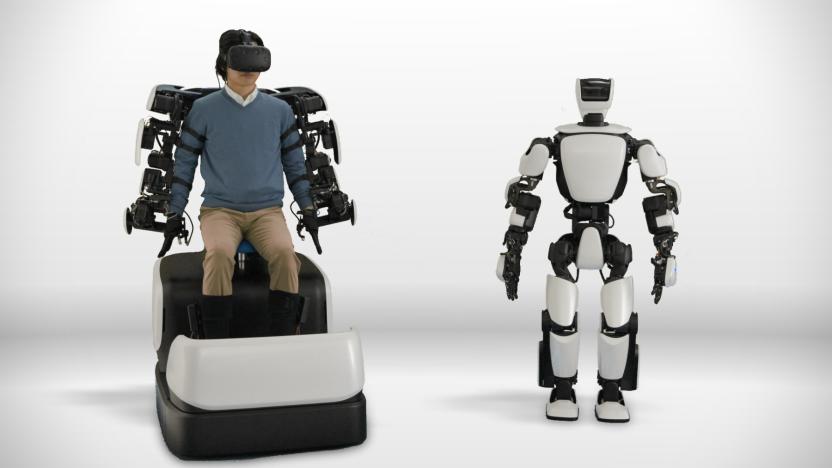
Toyota's T-HR3 robot mimics your movements
While Honda's ASIMO has taken much of the attention for automaker-built robots, Toyota has been working on humanoid helpers of its own for years, and now it's unveiling a third-generation model. The THR-3 expands on previous models built to test specific joints and movements by putting together a full body to be controlled by a human operating its Master Maneuvering System. The force feedback-enabled control system includes a head-mounted display (HTC Vive), "data glove" and torque servos that allows the operator to "instantly manipulate" the robot by mapping their motions and force precisely.
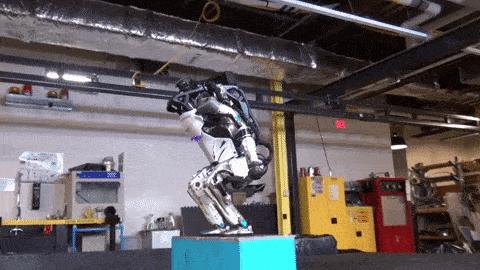
Watch Boston Dynamics' Atlas robot nail a backflip
We've grown accustomed to seeing Boston Dynamics' impressive line-up of robots strutting about in periodic video updates, each more terrifying than the last. But, every once in a while, the company unleashes a clip so awesome you can't help but watch. And, so it is with its latest vid starring the humanoid machine known as Atlas. You know, the poor bot that's been toiling away for years, in between tethered walks and prods from its human trainers. The 5-foot 9-inch robot is currently lighter and more agile than ever (thanks to last year's upgrade), and now it's gone all Jackie Chan for a backflip.
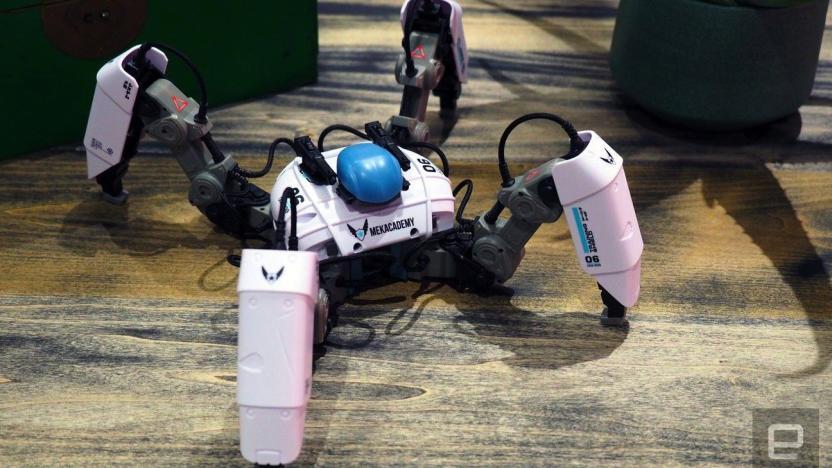
MekaMon is an anime-styled battle bot you pilot with your phone
Between the success of shows like BattleBots and the amount of interest in last month's MegaBots debacle, it's pretty obvious that people really want to watch robots fight. But while watching two mechanical titans grapple can be satisfying, few things have captured the feel of the robot battles in video games and anime. Reach Robotics' $300 MekaMon, which launches today in the Apple Store, might be the closest we've seen to capturing that cyber-future ambience. Its bots can run and climb around the physical world while also using AR to add virtual weaponry for the full Japanese mech experience.

Audi made an escape room to promote its E-Tron cars
The rise of the "escape room" has been incredible. Teams of people all over the world are now regularly battling zombies, embarking on real-life Legend of Zelda adventures or playing armchair detective via Facebook Live in fun, safe but wholly manufactured environments. The concept has become so popular that even major car makers have decided to get in on the act. Audi, for example, wanted to highlight the benefits of its all-electric E-Tron line, so it built a experience that basically presents all its future technology to the public.
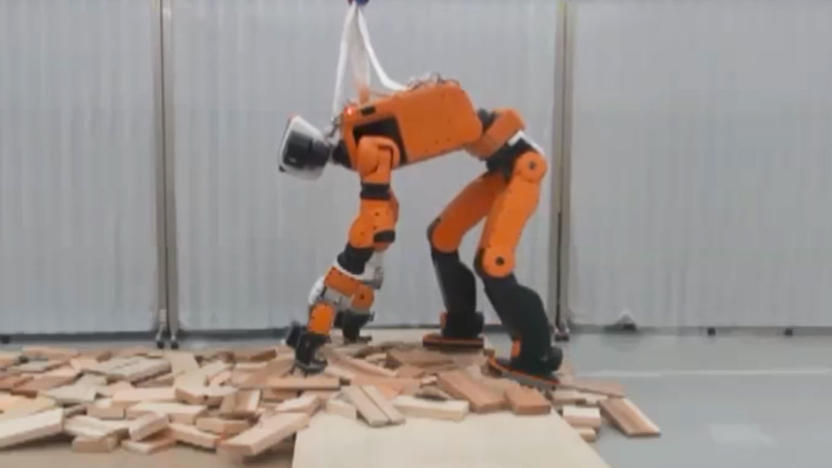
Honda's disaster recovery robot can climb ladders
The disaster response team of the future could be made up of an army of cheery orange robots, according to Honda. The company has unveiled a working prototype of its E2-DR disaster response robot -- first revealed in an R&D paper in 2015 -- and it can do a lot. At 1.68 meters high and weighing in at 85 kilograms, E2-DR can walk, step over objects, climb stairs and ladders, slink through narrow spaces and traverse piles of debris. It can even tolerate rain for 20 straight minutes, which is more than a lot of actual people can.

Sphero's Mini app-powered robot is its smallest one yet
Over the past year, Sphero has been busy teaming up with Disney on connected toys for film franchises like Star Wars, Spider-Man and Cars. But today the company is launching a product that takes it back to its roots: a mini version of its original app-controlled robot. The new rolling ball, aptly named Sphero Mini, is about the same size as a golf ball and comes with a removable shell, which you can get in white, blue, green, orange or pink colors. As is to be expected given the different frame, it does come with a few tradeoffs compared to models like the SPRK+. Mini isn't waterproof and connection range is limited to 10 meters, as opposed to 30 on its higher-end sibling.
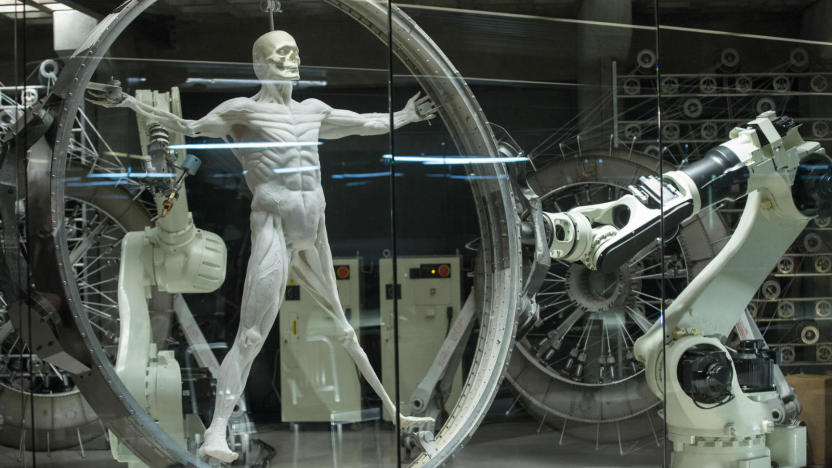
Synthetic muscle breakthrough could lead to 'lifelike' robots
A breakthrough in soft robotics means scientists are now one step closer to creating lifelike machines. Researchers at Columbia Engineering have developed a 3D printed synthetic tissue that can act as active muscle. The material, which can push, pull, bend, and twist (thanks to its use of silicone rubber and ethanol-dispensing micro-bubbles) is also capable of carrying 1,000 times its own weight. Not only could the invention result in super-strong machines (like a Terminator that works in manufacturing), but it will also release soft robots from their current shackles.

A robot conductor led a live orchestra performance
Just a month after humanoid robot Pepper conducted a Buddhist burial ceremony, a robo-contemporary has conducted the world-renowned Lucca Philharmonic orchestra alongside opera great Andrea Bocelli. Do robots need a heart to complete tasks of passion? As shown by YuMi, the robotic maestro designed by Swiss Firm ABB, maybe not.
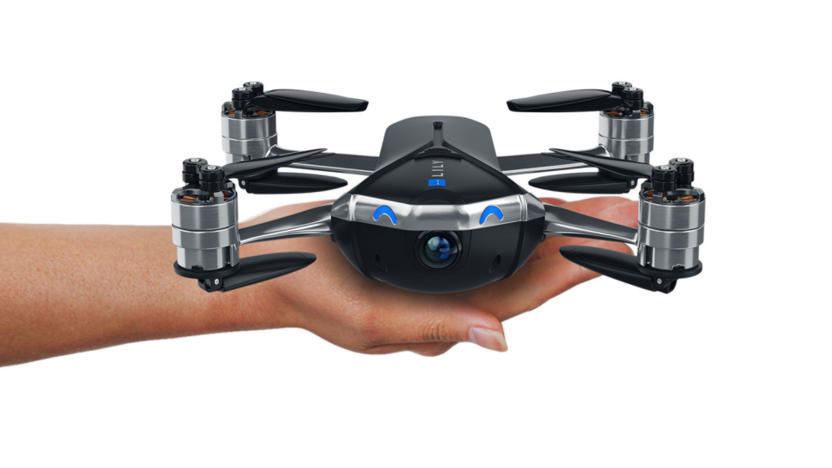
The reborn Lily drone isn't what you were expecting
To say that Lily drone backers were disappointed would be an understatement. They were promised a cutting-edge machine only to watch the $34 million crowdfunding campaign go up in flames, and only some contributors have received their funds so far. However, Lily is back -- sort of. Mota Group (which bought the brand name) has introduced a reborn "Lily Next-Gen" that includes the the same cute black-and-chrome look as the original, but not much else. You're not going to launch the drone by throwing it, and it's definitely not waterproof. Its biggest selling points are 4K video and one-button takeoff.

Robots are now better at targeting individual neurons than people are
The brain is a delicate thing, and scientists keep looking for high tech ways to make it easier and safer to to learn more about it. In the area of brain surgery, there have been smart scalpels that know the difference between tumors and healthy tissue, sensor-embedded plastic wrap to help doctors know just where to operate and even VR headsets to help surgeons monitor patients while they're in the OR. Studying the brain leads to even better outcomes, too, and engineers at MIT have just published a paper about using robots to target individual neurons from inside a living brain in order to record their electrical signals.
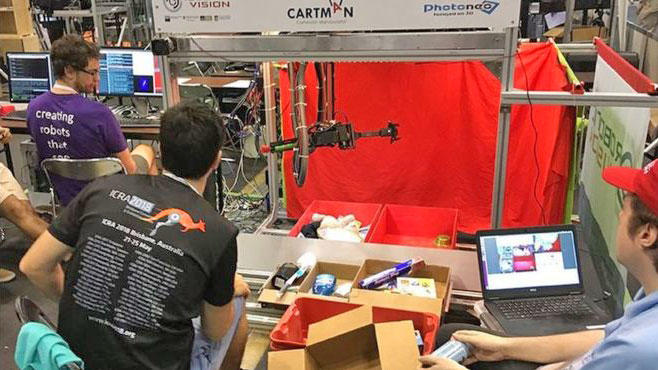
Australian ‘budget bot’ wins Amazon robot challenge
An inexpensive robot has triumphed over its more sophisticated competition to win Amazon's annual Robotics Challenge. 'Cartman', a robot designed by the Australian Center for Robotic Vision (ACRV), was built from scratch for a fraction of the cost of other competing robots, and was even held together in places by cable ties. This year's winner -- which netted its creators the AU$80,000 ($63,770) cash prize -- stood out from the competition because of its gantry-like design. Instead of a robotic arm, Cartman functions via a sliding mechanism that picks products from above, moving on three axes. At its end is a rotating gripper, which uses a suction cup or two-finger grip to grab the item. The parts for the robot were cheap by the standards of typical industrial robots, costing under AU$30,000 ($23,913).

Russian exoskeleton suit turns soldiers into Stormtroopers
In a bid to make its armed forces look even more intimidating, Russia has taken inspiration from science-fiction to create some futuristic-looking new combat suits. Developed by the state-owned Central Research Institute for Precision Machine Building, this very Star Wars-esque combat armor features a powered exoskeleton, ballistic protection from bullets and shrapnel and a heads-up display. While just a concept at the moment, the suit's designers hope it will enter full production in the next few years.

Afghanistan’s all-girl teen robotics team denied entry to US
Next month, the inaugural FIRST Global Challenge robotics competition will bring together high school teams from around the world. Taking place in Washington, DC, over 150 teams are set to participate. However, while the team from Afghanistan's robot will be there, the team itself won't because the US has denied their visa applications.

Ford realizes it should have an AI and robotics team
Ford is moving closer to vehicle autonomy by announcing its creation of a dedicated robotics and artificial intelligence research team. In a blog post by vice president and CTO Ken Washington, the company lays out its ambitious plans for exploring and innovating a whole range of vehicle tech with designs "to be at the forefront in the field."
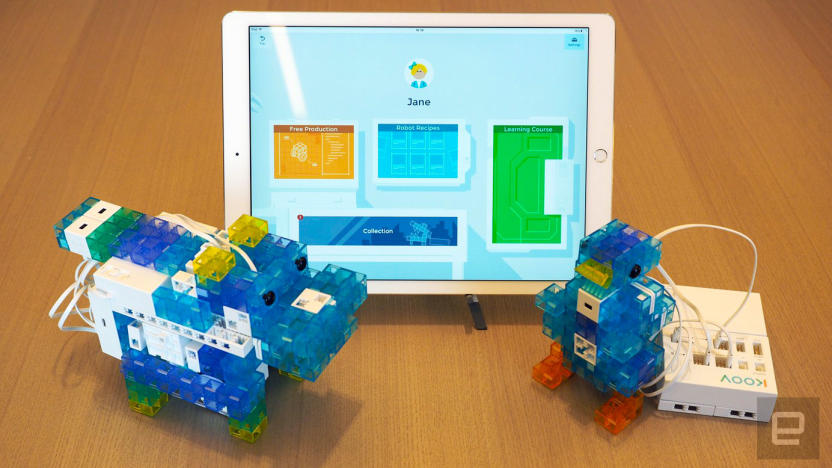
Sony's Koov is a candy-colored coding course for kids
STEM skills are in high demand right now, making toys that teach science and engineering popular with parents hoping to give their kids a leg up in the job market. Products like Hasbro's new robot that teaches coding have joined kits like Lego Mindstorms on store shelves. Now Sony is making its own plunge into STEM education using the Koov robotics kit, with decades of design experience being put to work in the hopes of training the next generation of engineers.

Inside The Mill’s mind-bending alternate reality art showcase
I stepped inside a small, dark room in a large, airy loft space in New York's Soho district early Wednesday morning. Our host fitted me with an HTC Vive and told to explore the world around me. Within moments, I was trapped in a glass box, surrounded by other people, also wearing VR headsets, also trapped in glass boxes, one of whom continued to claw at the glass until both of our headsets were consumed by our own flesh. We were one with the machines. Over the next two hours I watched semi-autonomous robots run in circles, randomly scribbling on large sheets of butcher paper; pulled the virtual puppet strings of a CGI llama that lip synced to Mariah Carey; watched as Reeps One, a world-famous dubstep beatboxer, created unique digital sculptures with the incredibly nuanced tones of his voice; and floated through a VR dreamscape using my breathing and brain waves to propel me upward.
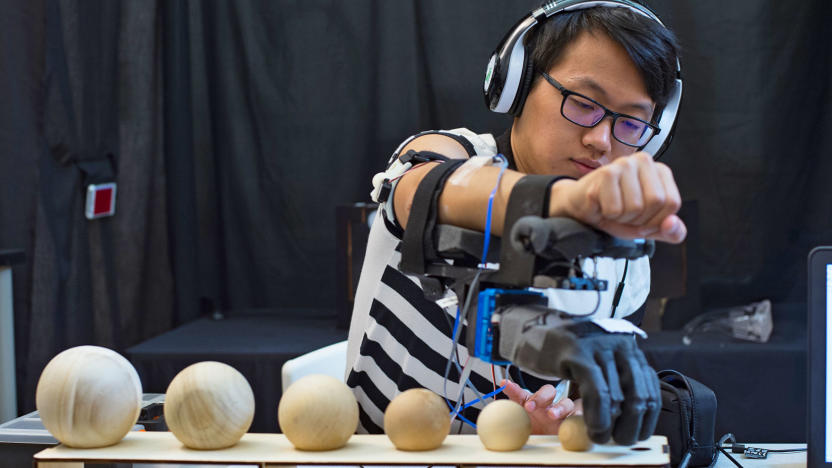
Haptic feedback gives prosthetics 'muscle sense'
For all the actuators, artificial tendons and glitter cannons that researchers are packing into modern prosthetics, these devices still lack an noninvasive means of transmitting haptic feedback to its user. However a device developed by Rice University in partnership with the University of Pisa and the Italian Institute of Technology aims to do just that.
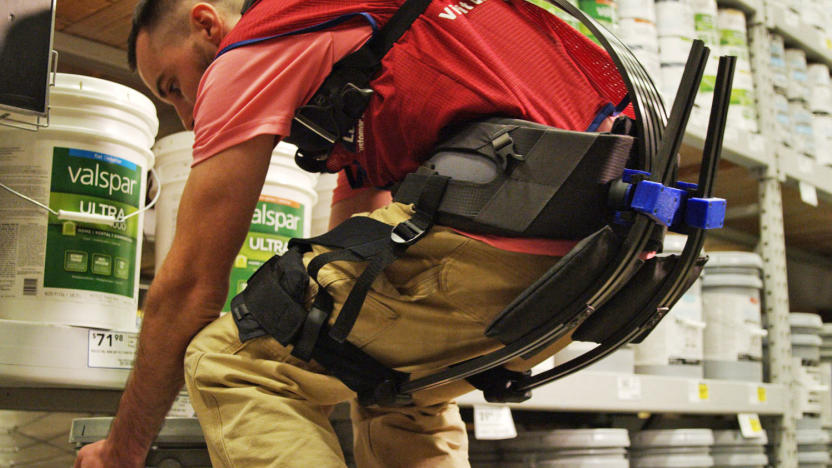
Lowe's exoskeletons help workers carry what you can't
Exoskeletons aren't just for shipyard workers or people with limited mobility. If Lowe's has its way, they'll help store staff fetch your giant bucket of paint. The home improvement retailer has partnered with Virginia Tech to test prototype passive exoskeletons that make it easier to haul heavy objects. Carbon fiber in the suits' back and legs serves as a "taut bow" that stores energy when you bend down -- that energy comes back the moment you stand back up, making it much easier to lift that heavy bag of concrete. The material's flexible nature should also help the suits feel relatively comfortable... a rather important consideration for warehouse workers who may need to wear it for an entire shift.
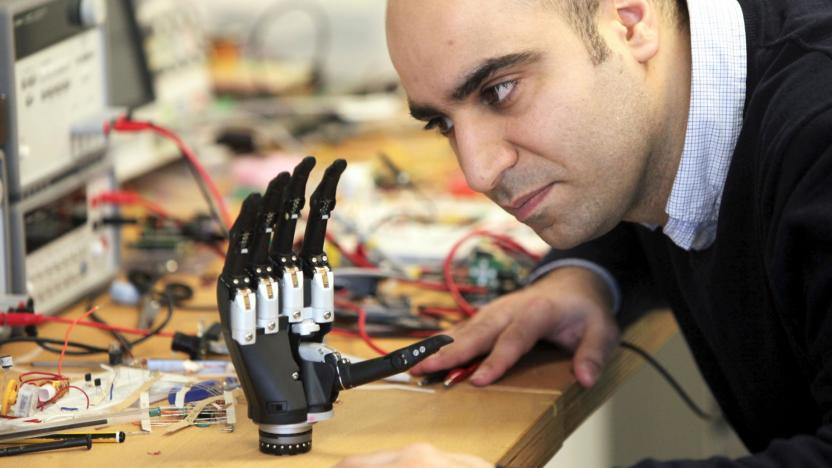
'Intuitive' prosthetic hand sees what it's touching
Even as we begin to wire prosthetics directly into our peripheral nervous systems and wield Deus Ex appendages with only the power of our minds, many conventional prosthetic arms are still pretty clunky, their grips activated through myoelectric signals -- electrical activity read from the surface of the stump. The "Intuitive" hand, developed by Dr Kianoush Nazarpour, a senior lecturer in biomedical engineering at Newcastle University, offers a third approach. It uses a camera and computer vision to recognize objects within reach and adjust its grasp accordingly.
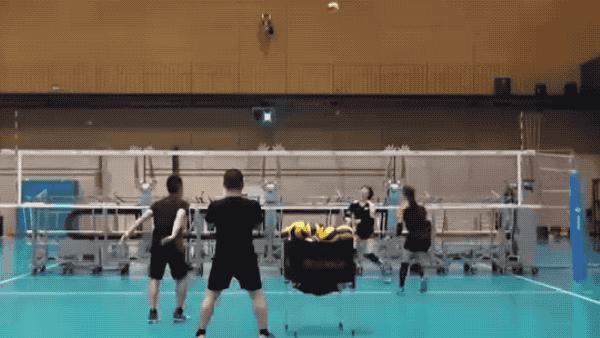
Japan's volleyball team test their spikes against robot blockers
In a bid to give its national volleyball team an edge, Japan has enlisted the help of high-tech training robots. According to New Scientist, these bizarre-looking bots are used to mimic the opposing team's defense and are made up of three pairs of hands attached to a mobile torso. Mounted to a track, these new digital defense droids slide up and down to pre-set positions, allowing players to test out their spike shots against many different team formations.











